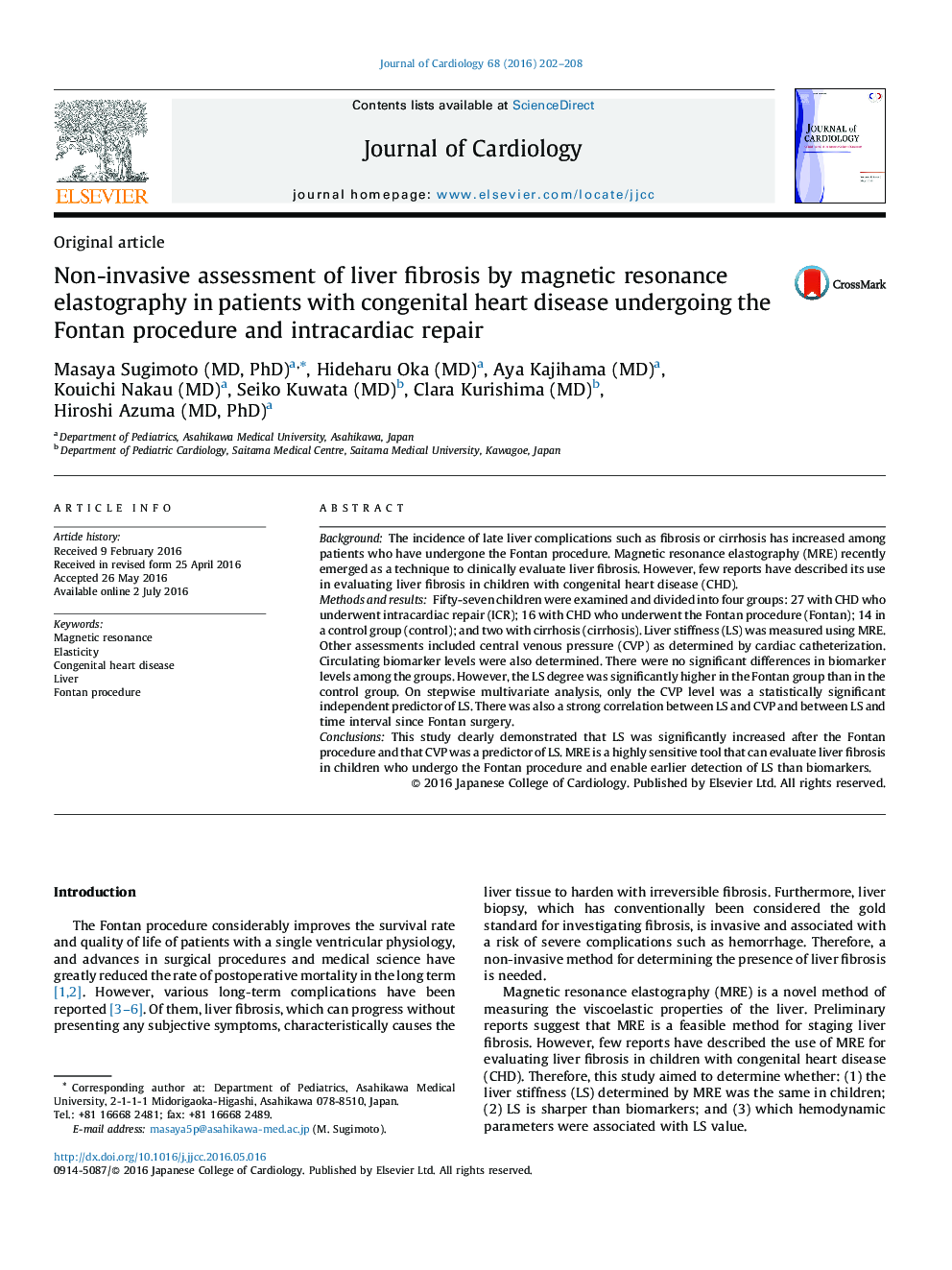| Article ID | Journal | Published Year | Pages | File Type |
|---|---|---|---|---|
| 2962768 | Journal of Cardiology | 2016 | 7 Pages |
BackgroundThe incidence of late liver complications such as fibrosis or cirrhosis has increased among patients who have undergone the Fontan procedure. Magnetic resonance elastography (MRE) recently emerged as a technique to clinically evaluate liver fibrosis. However, few reports have described its use in evaluating liver fibrosis in children with congenital heart disease (CHD).Methods and resultsFifty-seven children were examined and divided into four groups: 27 with CHD who underwent intracardiac repair (ICR); 16 with CHD who underwent the Fontan procedure (Fontan); 14 in a control group (control); and two with cirrhosis (cirrhosis). Liver stiffness (LS) was measured using MRE. Other assessments included central venous pressure (CVP) as determined by cardiac catheterization. Circulating biomarker levels were also determined. There were no significant differences in biomarker levels among the groups. However, the LS degree was significantly higher in the Fontan group than in the control group. On stepwise multivariate analysis, only the CVP level was a statistically significant independent predictor of LS. There was also a strong correlation between LS and CVP and between LS and time interval since Fontan surgery.ConclusionsThis study clearly demonstrated that LS was significantly increased after the Fontan procedure and that CVP was a predictor of LS. MRE is a highly sensitive tool that can evaluate liver fibrosis in children who undergo the Fontan procedure and enable earlier detection of LS than biomarkers.
